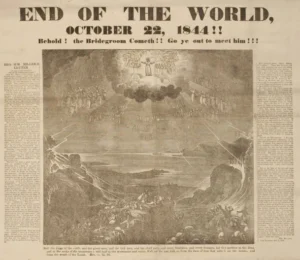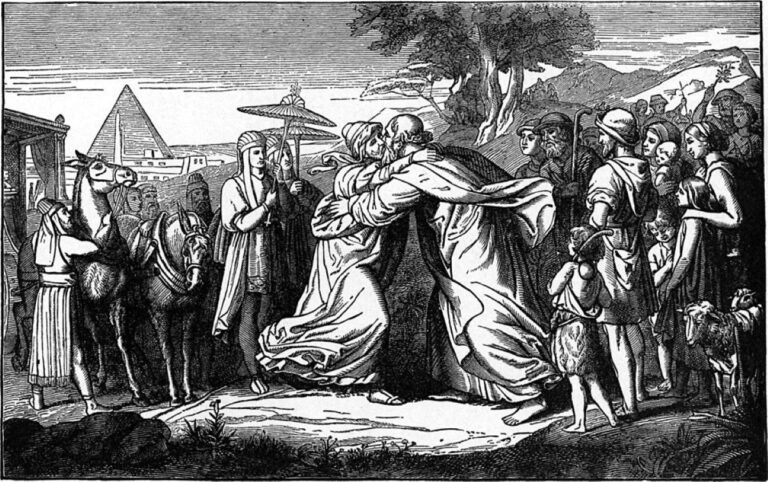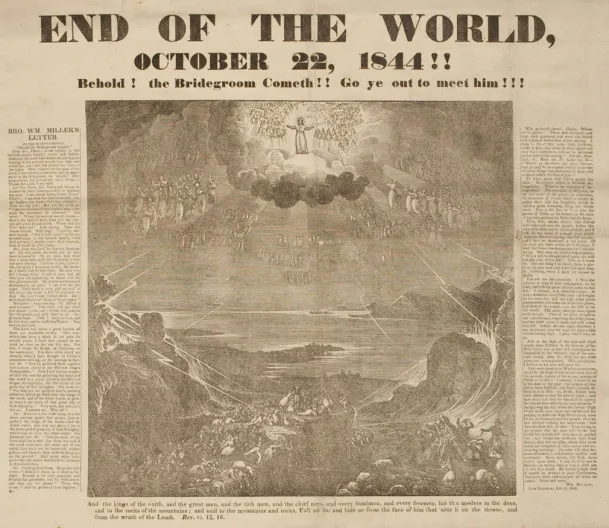In Lewis Carroll’s Alice in Wonderland, the titular character goes down the ‘rabbit hole’ and meets the Mad Hatter. As a child, I never stopped to ask why the hatter was mad, but there is a reason.
The book was written in 1865. Between the 17th century and well into the 20th century, hatters (people who make hats) used mercury nitrate in the felting process.
They did not know back then just how poisonous this substance was. It can be absorbed through the skin and causes physical, mental, and psychological problems. They had hints, but like many early technologies, they did not know just how bad it was.
Ellen White, the prophetess of the early Seventh Day Adventists and the reason why many other protestant churches adjacent to SDA call it a cult, was the daughter of a hat maker, and yes, she touched the stuff.
We will come back to this later in the story. Let’s trace the prophetess’ life back to the beginning.
Early Days and Conversion
Ellen White was born Ellen Gould Harmon to Robert and Eunice Harmon. She had a twin sister, Elizabeth, and was the seventh of eight kids. Robert was a farmer and a hatter who used mercuric nitrate.
When Ellen was 9, she was hit in the face with a stone while living in Portland, Maine. This, she would later write, started her conversion.
“This misfortune, which for a time seemed so bitter and was so hard to bear, has proved to be a blessing in disguise. The cruel blow which blighted the joys of earth was the means of turning my eyes to heaven. I might never have known Jesus, had not the sorrow that clouded my early years led me to seek comfort in him.”
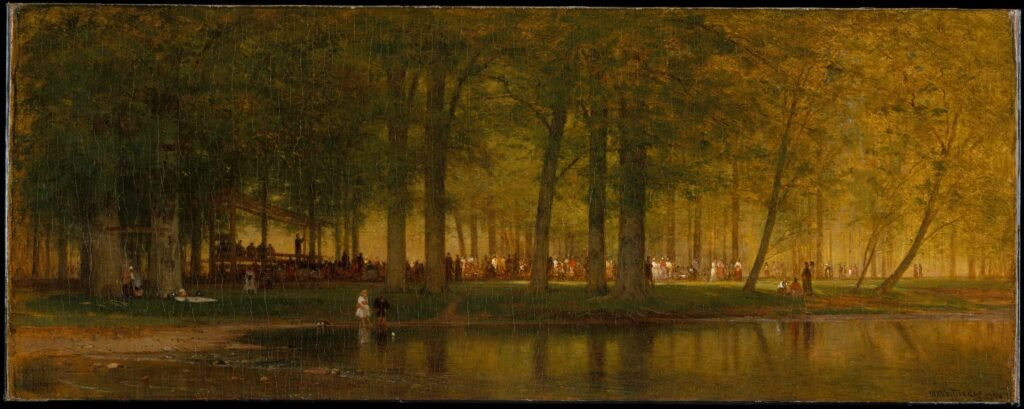
At age 12, she underwent a breakthrough while attending a Methodist Camp Meeting, and her family became involved with William Miller’s lectures. These would terrify her and send her spiraling as she spent nights in prayer, crying to avoid being eternally lost.
She got baptized two years later in 1842 and waited for the world’s end. Because of their involvement with Miller, the Harmon family was kicked out of their Methodist church.
You know the rest from here to 1844, when the world spectacularly did not end.
Ellen, the Seer
In 1844, as the ashes of Millerism cooled and most of its adherents drifted off confused or humiliated, a now 17-year-old Ellen claimed to have received a vision while praying with her friends in Portland. In her words, she seemed to be “rising higher and higher, far above the dark world’ and saw a group of faithful believers walking a narrow path toward the holy city, guided by the light of Jesus.
This vision turned the teenage girl into a spiritual sensation. She became indispensable in a movement looking for signs, omens, and reasons not to disband entirely.
Over the next year, she reported more visions, many of them eerily convenient. When her followers expected Christ to return in 1845 because of her visions, and that didn’t happen either, Ellen’s revelations shifted in tandem. She affirmed new expectations, provided new timelines, and then, when the dates failed again, she turned the message inward.
The problem, she said, was not the date; it was the people. They were not ready! The group coalescing around her also stopped making predictions. It was becoming clear just how precarious that was.
This would also lead to the formation of the belief that Christ would only return once everyone had heard the Adventist message. But, that comes later.
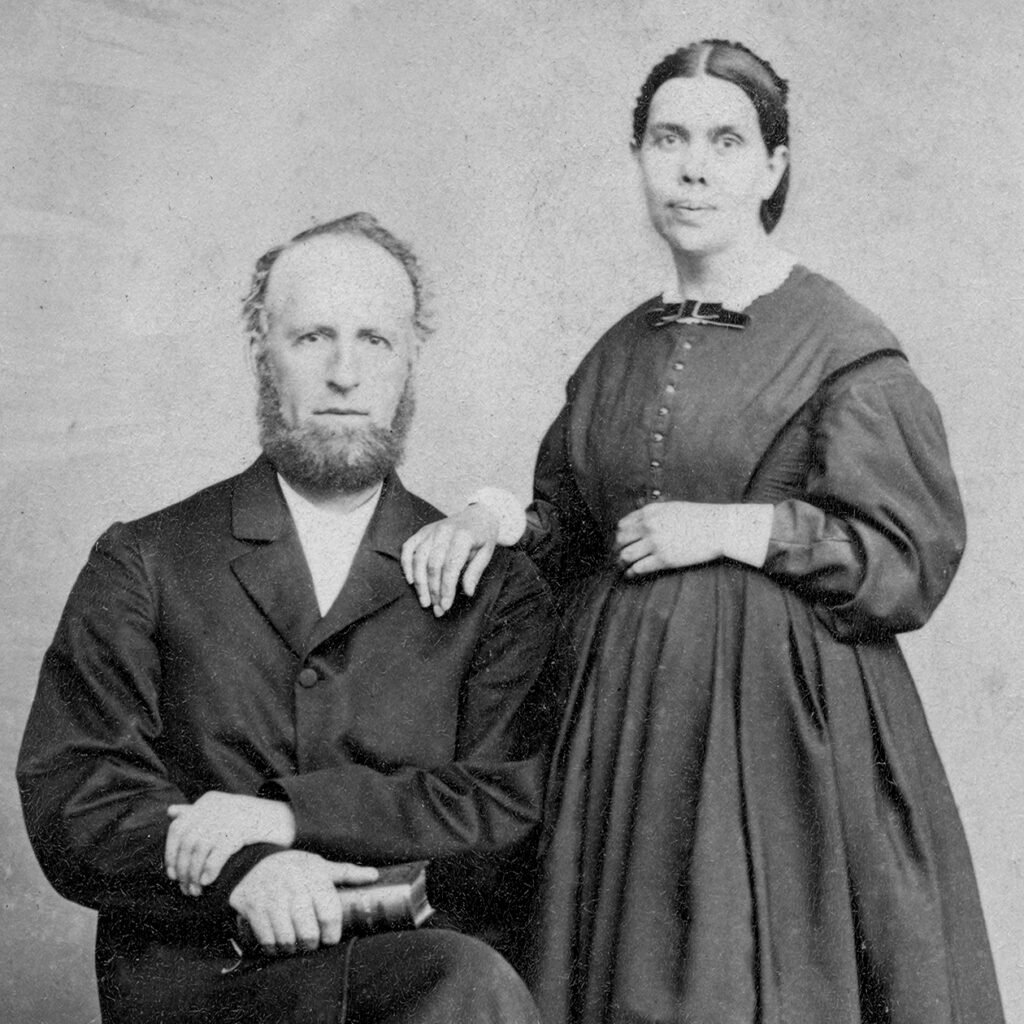
James White, a Millerite preacher and teacher, found her compelling, both spiritually and personally. He believed her visions were genuine. They met, married, and began traveling together, preaching a new message from the ruins of the old one.
A story is told from the account of Mary E. Bodge, a contemporary who recounted a dramatic moment during a meeting in October 1845. James White said he had no intentions of marrying ‘that little deform thing,’ as he pointed to her sitting in a chair, and I just thought that was a little funny.
Sabbath and the Rise of the Remnant
While Ellen was ascending to prophetic relevance, another seemingly minor doctrinal debate was brewing. It had to do with the sabbath, and it would come to define the movement.
Enter Rachael Oakes, a Seventh Day Baptist who challenged a Millerite preacher, Frederich Wheeler, to take the fourth commandment “Remember the Sabbath day, to keep it holy” seriously. Wheeler, convicted, began keeping Saturday as the Sabbath.
Joseph Bates, a former sea captain, took up the cause and published a tract in 1846, arguing that the seventh day, not Sunday, was biblically correct.
Ellen and James White initially were not on board. But, shortly after reading Bates’ work, Ellen conveniently had a vision confirming it. This began a pattern. Doctrinal proposals would be studied, argued, and often decided, at which point Ellen would receive a vision ratifying the conclusion. It was a holy rubber stamp, if you will.
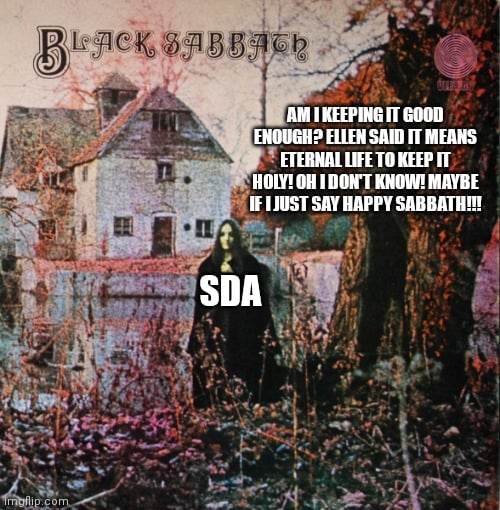
This is also when a powerful concept emerged: the “Remnant Church.” In Revelation 12:17, there is this concept of ‘the remnant’ which refers to a group of people who remain loyal to God after a time of hardship. I think you can see where this is going and why Adventists at this time thought the verse was about their movement.
The verse says the remnant would “keep the commandments of God and have the testimony of Jesus.” That meant the Saturday Sabbath. That meant visions. That meant them.
This is also how we get the concept of villifying Sunday keepers as bearing or keeping ‘the mark of the beast.’ That brings me to the next thing.
Sunday: The Mark of the Beast
If you were raised SDA, this is familiar territory; Sunday worship wasn’t just incorrect, it was a sign of apostasy—a deception engineered by the beast– the Roman Catholic Church.
The Council of Nicaea, where Sunday was formalized as the Christian day of worship, is pointed to as the smoking gun. Adventist preachers claimed Constantine and Rome had corrupted the true faith. Sabbath-keeping became a moral line in the sand. Sunday was a symbol of compromise.
Historically, very few of these claims are accurate.
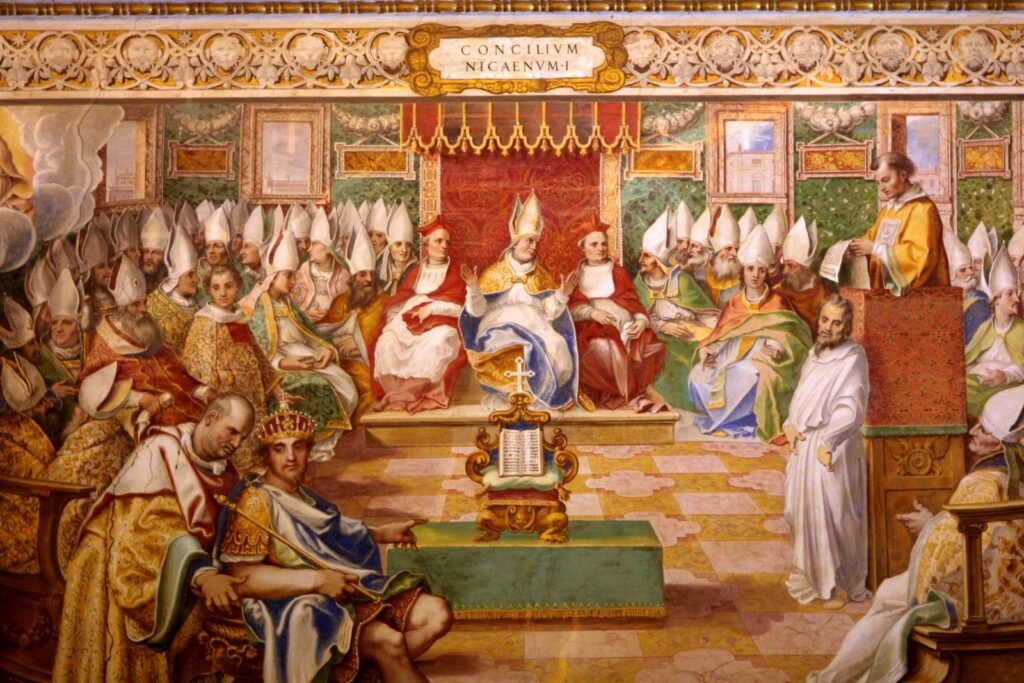
Of course, this theological conundrum created new questions. When exactly does the Sabbath begin? Sunset Friday? Midnight? Sunrise? Early Adventists argued about these details for quite some time. Even petty arguments can affect your eternal life in the grand cosmological war between Good and Babylon.
Ellen was shown (by God, in a series of visions) that it was wrong to commence the Sabbath at sunrise. An angel said, “From even unto even shall ye celebrate your Sabbaths.”
But then, she had another vision, same as the first, but this time, the angel added these words, “Take the word of God, read it, understand, and ye cannot err. Read carefully, and ye shall find what even is and when it is.”
This would lay the groundwork for the debates to happen, and once some sort of consensus was reached, Ellen would have her visions to confirm or sway the discussion.
Viewed critically, the pattern is clear: vision follows need, offering approval for already-chosen pathways. This raises the question for external observers: how much of this is divine inspiration, and how much is just the prophet picking favorites?

NOTE: The SDA church likely originated evangelical conspiracy theories, and this mark of the beast thing was just one of the first to crop up. I am almost sure that modern-day prepper culture, right-wing conspiracy theorists like Alex Jones, flat-earthers, anti-vaxxers, New World Order theorists, and people who “do their own research” owe a lot of their unique brand of thinking to the same flexibility of thought and superiority complex that birthed the SDA church.
Visions and Print Media
In 1848, early leaders met for a series of conferences to consolidate the gospel order and develop some sort of organization. However, this too was a touchy subject. It was believed that once a church was organized, it would become the biblical concept of Babylon.
So, there was still a lot of hesitancy to call what they were anything other than a movement.
NOTE: Babylon in the bible is used as a symbol for the many forms of spiritual corruption, deception, and chaos that God’s people have faced throughout history.
Ellen had another vision in 1849 where she was shown that James should start a paper that “would be small at first but that would grow to be like streams of light going around the world.” Her husband took the hint, founded and edited it, using the platform to share the Adventist message. It would turn out to be very useful.
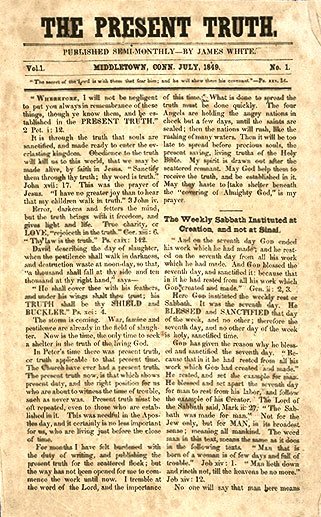
He also used the paper to elevate Ellen’s status by linking her to biblical prophecy itself. He cited Joel 2:28, which says:
“And afterward, I will pour out my Spirit on all people. Your sons and daughters will prophesy, your old men will dream dreams, your young men will see visions.”
Would you like to guess which part he focused on? He also referenced Revelation’s ‘Three Angels’ Message’ to frame his wife as the fulfillment of end-time scripture. It was a brilliant theological marketing strategy. In the same year, James started The Advent Review, another publication.
By 1850, The Present Truth merged with The Advent Review to become The Review and Herald, which is still published today.
When Joseph Bates, one of the founders, predicted that Christ would return in 1851, she rebuked him, and yes, she used the paper to do it. She spoke about how the Lord had shown her the danger of setting dates.
Today, many Adventists are not taught anything about these failed prophecies. We were told it was just THE GREAT DISAPPOINTMENT and nothing else. These are the footnotes of a church with selective memory.
Becoming Babylon
Ellen was a big part of resolving the closed-door issue, but in the process, it would turn the movement into what they feared–a church!
After much study and prayer, it was decided that the door to the Holy Place WAS indeed closed, but another had opened–the door to the Most Holy Place. Christ, in his heavenly ministry of investigative judgment, had not closed the window for salvation.

Now, they could grow. But with growth, you need control. Control means bureaucracy–people to run things. The gospel order had to be established. They had a paper, so they published a list of ministers to prevent charlatans from pretending to be sent by them, ordained them, and even issued membership cards.
No Women
Women, faithful to God’s word, could not become ministers. They could serve as…women. Just do what you do at home, at church. Sweep, clean, and be helpful. I don’t make the rules.
However, Ellen White was given ministerial credentials so she could be paid. This highlights the struggle to balance the needs of the patriarchy and spiritual gifts.
Flirting with structures like this was risky. The Millerites had avoided becoming a denomination because they would become like all the corrupt Babylon churches they had left.
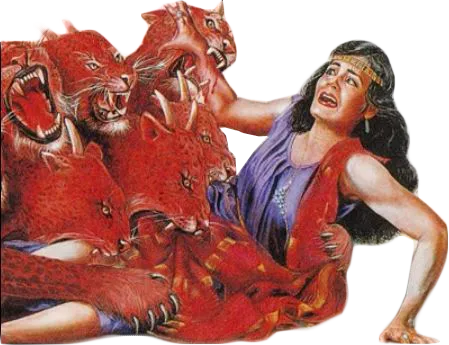
Courtesy: Patrick Akhuem-o’khan
However, the pioneers found a loophole. They would not become a church. They’d be an association–a legal shell to hold property, print tracts, collect donations, etc., without the stigma of being a Babylon church. Until then, all donations and movement property had been under James’ name, and he had to pay taxes. I can imagine he was pleased to have that burden lifted.
They also needed a name. And would’t you know it–Ellen had a vision, after they had a discussion about it, of course. God, she said, approved “Seventh-day Adventist.”
Battle Creek and Beyond
By 1855, the movement relocated to Battle Creek, Michigan. If you have ever eaten cereal or checked out the cereal section in a supermarket, you might have seen Kellogg’s packaging. John Harvey Kellogg, yes, the same Kellogg who founded the cereal company, which is still active today, would become a key player in the next chapter, influencing the church’s obsession with health reforms, hospitals, and sparking drama.

At this point, the foundations were in place. They had a prophet, a publishing house, a name, a Sabbath, and a mission to be the remnant, preparing for Christ’s return.
Ellen In Wonderland
Let me conclude this by bringing you back to the beginning. In later sections, we will look at the nature of her visions, who witnessed them, and what they reported. We will also try to figure out whether that head injury from when she was nine and the contact with Mercury (a poison that absorbs through the skin and causes many of the problems she wrote about in her journals and spoke about in interviews) had something to do with her visions.
Was she a prophet or just sick?
Why is this important? Well, because she is important–very important. The church holds her up as the modern-day equivalent of people like Jeremiah, Daniel, and other prophets of that ilk. That deserves a closer look.
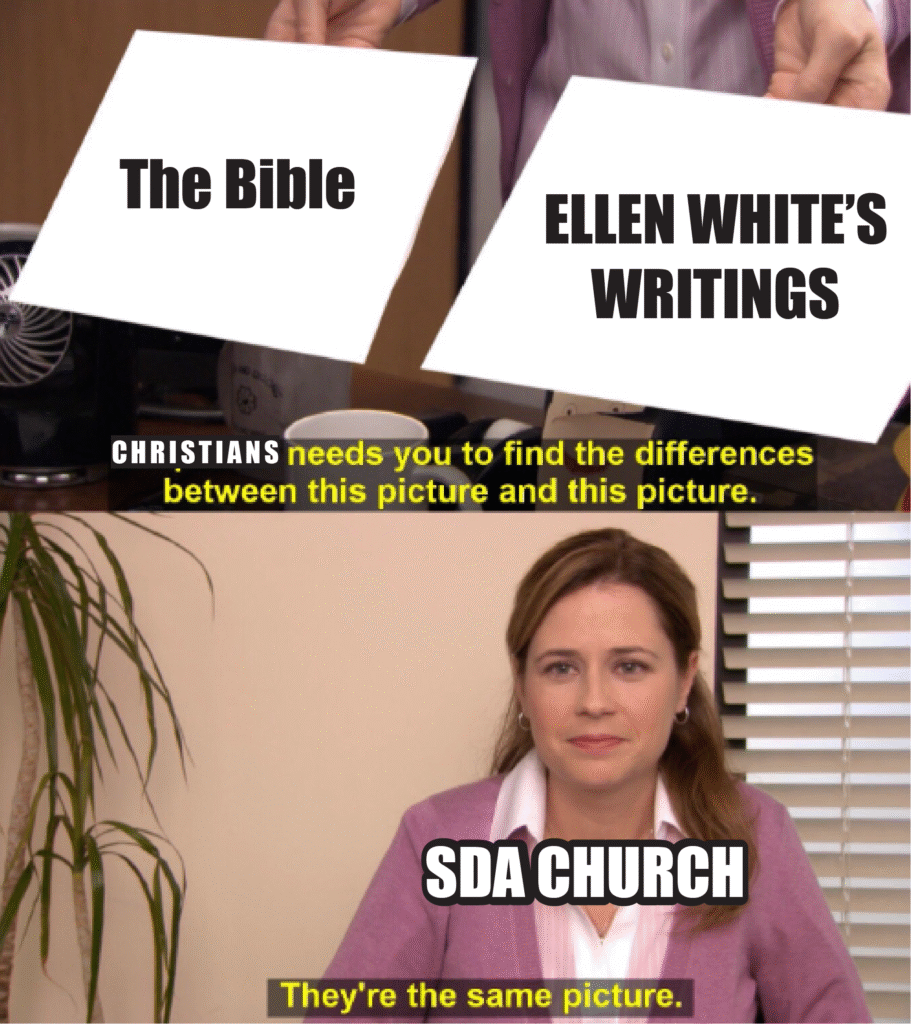
It also caused the affected people to display many of the same symptoms she did when she was having her visions. This woman’s writings were and still are held up as additional divinely inspired theology for the church to consider, and it brought up many problems for the church, but that comes later.
I promise, all this is building to something. To understand today’s Adventists and their influence, you must know how they began, something the church never taught me.


